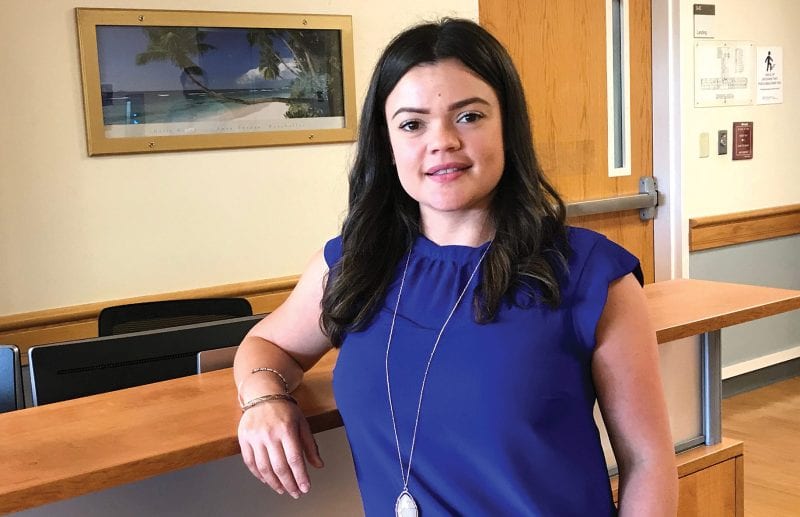COVID-19 Poses Challenges for Substance-abuse Providers, Clients
Glass Half Full
By Mark Morris
Each year, as the weather becomes colder and the days get shorter, it’s not unusual to see an increase in demand for substance-abuse services due to seasonal depression. This fall and winter, however, counselors expected an even larger spike in the need for their services because of COVID-19.
Since the beginning of the pandemic, treatment centers in Massachusetts have seen an increase in opioid-related overdoses in the patients they treat — a problem exacerbated by the fact that the drugs have become more dangerous, said Steve Winn, president and CEO of Behavioral Health Network (BHN).
Health professionals believe the problem stems from interruptions in the worldwide supply chain of illegal drugs, making it harder to get heroin and synthetic opioids like fentanyl. As a result, what is being sold as pure heroin is often mixed with a more lethal type of fentanyl, causing the increase in overdoses and deaths.

We don’t know if use is up, but we know the repercussions of use are more serious now than they were a year ago.”
“We don’t know if use is up, but we know the repercussions of use are more serious now than they were a year ago,” Winn told HCN. “In 2018 and 2019, Massachusetts had begun to flatten the curve on opioid overdoses, but now that curve has accelerated up.”
It’s not a regional problem, he added, as the most recent data shows opioid deaths up in every county in the state.
People with substance-use disorders often have a co-occurring mental-health diagnosis, a situation that may increase their COVID-19 risk, said Millie Rivas, clinical supervisor for Outpatient Behavioral Health at Center for Human Development (CHD), adding that several factors can make people with substance-use disorders more vulnerable to coronavirus.
“Patients with a co-occurring diagnosis usually have a history of poor healthcare and poor nutrition,” she noted. “Add substance use to that, and they become a magnet for COVID-19.”
In short, the stress and anxiety caused by the pandemic — and the economic turmoil that has followed in its wake — aren’t the only COVID-related factors making things tougher for those struggling with substance abuse and those striving to help them. Not by a longshot.
From a Distance
Even treating people with substance-use issues became more complicated when the pandemic first hit. By following CDC guidelines to keep everyone safe, one-on-one support was severely reduced, resulting in more isolation for vulnerable people who needed help.
While support has largely shifted to virtual appointments, Rivas and her staff have had to provide technical guidance, as well as their normal counsel to their clients.

“We’re doing things we aren’t accustomed to, such as training people how to use Zoom platforms and how to use their phone beyond Facebook so they can reach services and telehealth,” she said.
Working on virtual platforms allows CHD staff to interact in a more normal way with clients and observe their behavior. Rivas noted that meeting one-on-one would require clients to wear masks, making it more difficult to hear them or see their facial expressions. When clients use virtual platforms, they are also able to increase their engagement in the world.
“At times, going virtual has been frustrating for the client, but overall, it’s nice to have them experience an achievement like that,” Rivas said, adding that clients can now more easily connect with healthcare providers as well as family and friends, and hopefully become more engaged and feel less isolated.
While it’s not surprising that those with a history of substance abuse would be more vulnerable during a pandemic, Rivas has observed an increase in substance use among people with no diagnosed substance-use disorders. The myriad factors include health concerns, increased isolation from not going out and socializing, and anxiety about finances. “It’s not unusual for people to manage stress with one too many beers or one too many glasses of wine.”

Patients with a co-occurring diagnosis usually have a history of poor healthcare and poor nutrition. Add substance use to that, and they become a magnet for COVID-19.”
Winn noted that clinicians at BHN have observed an increase in people coming in to talk about alcohol use and overuse. “They are self-medicating because they feel more stressed, more unhappy, and more isolated.”
Edna Rodriguez, director of Clinical Assessment and Clinical Ambulatory Programs at Providence Behavioral Health Hospital, has noticed a trend during the pandemic of people having relapses and abusing alcohol after years of being clean and sober. She cited one example of a person who relapsed after five years of sobriety. Clients tell her they start drinking again out of boredom and being stuck at home.
“In my opinion, since COVID hit, we’ve seen an increase in the glorifying of alcohol use,” Rodriguez said, noting social-media memes about people day drinking and taking Zoom calls with a drink in hand. While meant to be humorous, she explained, these messages are dangerous for people with substance-use disorders, especially when so many are feeling less connected to the community.
“Distractions that were healthy, like going to the gym, going to church, or programs that encourage people to live healthy lifestyles, have all been reduced or eliminated,” she said. “We’re in a moment of depleted connections.”
Because the pandemic creates uncertainty for everyone, Winn encourages anyone who has a question about their substance use to reach out to BHN or one of the other local agencies.
“If you’re struggling with something, reach out and ask for help. We’re all doing telehealth, so it’s safe in terms of social distancing.”
Heal Thyself
Providers face a dilemma of trying to help people while at the same time feeling their own stress and uncertainty about the coronavirus. Rodriguez said many of her colleagues are experiencing ‘pandemic fatigue.’
“I wish there was a book on my shelf titled ‘How to Treat Substance Use Disorders During a Pandemic,’ but we don’t have that book; we’re all new to this, and we’re still learning.”
Rodriguez and her colleagues are supporting each other by having conversations about how to stay grounded. She mentioned a ‘comfort cart’ that goes around to staff with bottles of water, soda, and treats like chocolate and candy.
“It’s a way of recognizing that everyone is stressed and needs something to comfort themselves,” she said. “The more we take care of each other, the better resource we’re going to be for our patients.”
Rivas said she often reminds her staff about the importance of self-care.
“It’s easy to forget about yourself when you’re trying to take care of someone else,” she noted, adding that, among other changes since COVID-19, staff can no longer use their offices for one-on-one meetings because they are too small to accommodate proper social distancing.
As everyone is still trying to figure out how to stay safe from a virus that just won’t fade away, Rodriguez said her normal work process now includes thinking about how to take care of herself as a provider.
Yet, she remains hopeful the scientific and therapeutic communities will use their creativity to develop new ways for everyone to deal with coronavirus. “These times are calling for an honest and humble review of how we administer treatment, how we approach our patients, and how we approach ourselves as providers.”




